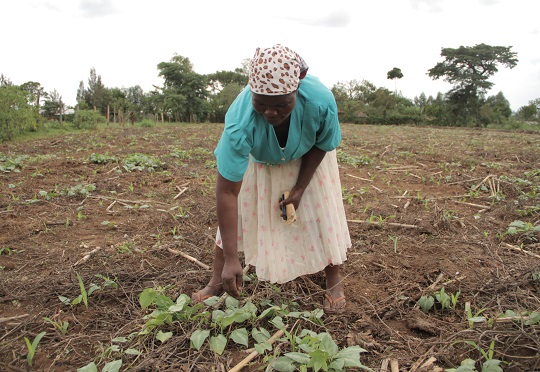Zero tillage making farming profitable in Africa

Zero tillage is making productive agriculture profitable in Africa while improving soil health and farmer yields, especially in Uganda, Algeria, Lesotho and Zambia.
Farmers in these countries have realized the environmental and economic benefits of adopting no-till on their land.
Rural Business Development Services in Uganda train, advise and guide smallholder farmers in adopting better farming practices and alternative technologies, helping farmers become more efficient and productive.
“By adopting no-till, Ugandan farmers have seen better crop emergence, less crop stress, higher soil water retention and better soil structure. Direct seeding also significantly reduces the amount of labor required,” said George Kaweesi.
“Direct seeding is important because it makes life easier and more profitable for women and children who do much of the agricultural work,” he says.
In the first season of adopting no-till, yields increased by up to 100% through more efficient use of on-farm and purchased inputs. The nutrition of farm families has also improved dramatically through the integration of protein-rich pulses. Farm incomes have increased with the development of off-farm business opportunities and increased marketing of crops not needed for household consumption.
The economic impacts of no-tillage are particularly significant for low-income countries. Benkhelifa Mohammed, who farms in Mostaganem, Algeria, was among the first farmers to use the results of a no-till research trial in Algeria’s semi-arid climate.
Mohammed says no-till will revolutionize small-scale agricultural production in many poor countries that have little water and little mechanization.
About 80% of the people of Lesotho, a small country completely surrounded by South Africa, depend on agriculture to survive. Yields have declined by 50% in recent decades due to severely degraded soils and as a result the country had high unemployment rates in the mid-1990s.
During a Peace Corps tour, Terry Ellard of Seattle, USA, was convinced that no-till farming was the only way to save the country’s soils. In 2011, Ellard started a local project in Lesotho to manufacture agricultural tools other than plows.
He returned to the United States after the tour ended in 2013 and began to learn more about no-till to help design suitable tools that can be produced in African countries.
“Direct seeding is the only way to save the severely degraded soils found in many small countries in Africa,” says Ellard.
“Due to climate change, droughts are much more frequent. When the rains come, they are often heavy downpours and erosion can be a serious problem.
Direct seeding is helping Zambian farmers manage bushfires, which are also on the rise with climate change. Adrian Bignell, who operates a farm in Zambia, says yield losses due to unexpected bushfires are among the biggest crop problems in Central Africa. Even with firebreaks around his fields, a brush fire managed to jump the firebreak and burn a corner of the field.
Soybeans planted in the area have shown some of the many benefits of no-till in managing harsh conditions. Bignell says the stunted growth of soybeans in the scorched corner was clearly visible during one of the hottest and driest growing seasons on record in this region of Africa.
“When harvesting, there was a difference of 30 bushels per acre between the burned corner and the rest of the field, with the unburned area producing 48 bushels per acre,” says Bignell. “Loss of residue cover and less efficient use of limited moisture have clearly demonstrated the value of no-till in some of the world’s driest regions.”







